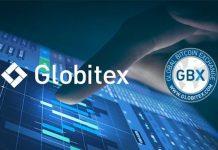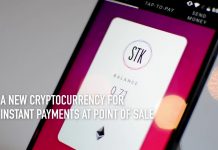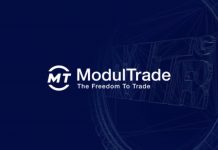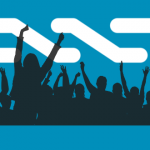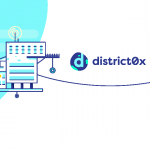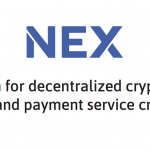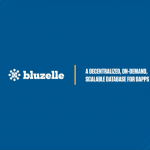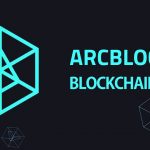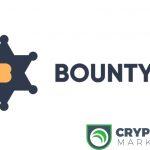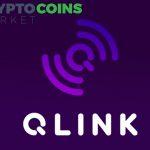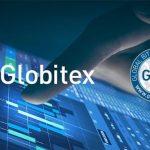Need an Ethereum and Bitcoin trading platform? OpenANX is claiming it’ll be the best cryptocurrency exchange market since it’ll be the first decentralized cryptocurrency exchange to involve multiple exchanges, tokens, and fiat currencies.
What is OpenANX?
OpenNXT is a decentralized exchange platform built on the Ethereum blockchain. By combining an open-source, trustless decentralized matching engine alongside collateral-backed asset gateways, the platform aims to improve consumer protection against fraud and theft and increase transparency between all trading parties.
Additionally, the OpenANX trading platform plans to address and solve the challenges of bringing real world assets like fiat (like the USD and Euro), onto and off the blockchain, a problem Open ANX claims is not often addressed by other decentralized exchanges.
OpenANX =Transparency of DEM + Liquidity of CEM.
OpenANX aims to be a crypto exchange platform that combines the transparency of the current decentralized exchange model with the liquidity and reliability of the current centralized exchange model.
In the current model of centralized exchanges, users deposit funds and hold IOUs (I Owe Yous) issued by the exchange in the form of their account balances and do not have actual possession of the underlying assets. They don’t control their funds anymore, and all ownership is recorded in the exchange’s central database. They operate somewhat like a bank without being regulated as one.
The exchanges do compete against each other but there are few ways to assess the relative risk of using one versus another. However, they provide liquidity needed for efficient markets and they are unique in providing fiat on-ramps to crypto-markets–something decentralized changes haven’t been able to replicate.
The OpenANX platform will take advantage of technical developments on the Ethereum blockchain such as payment channels (Raiden, 0x, Swap, ERC20) and utilize them to overcome the challenges faced by the current CEM. It will co-opt the strengths of the existing model to improve the existent decentralized exchange attempts by linking existing exchange platforms (“Asset Gateways”) to the network and enforcing a collateralized deposit system that will provide users with a way to measure risk.
FEATURES.
Asset Gateways.
The OpenANX platform allows centralized exchanges to provide their asset gateway services, so they take and hold real world customers’ assets and funds, and issue tokenized representations onto a blockchain. The user can then trade their freshly minted token with other asset gateway tokens or with digital currencies.
The issued tokens would be specific to the exchange and the fiat: Poloniex could mint PoloUSD or a new hypothetical asset gateway could mint AsgaUSD. These tokens are effectively collateralized by the fiat deposit, and when any user acquires them through trading and wants to transfer to fiat, they would swap the AsgaUSD tokens for USD. The relative prices for all the tokens would be different: for example, there would be a PoloUSD-AsgaUSD trading pair, and any difference would reflect the perceived relative risk that attempting to swap the token for fiat would be unsuccessful.
The gateways will also never hold both of the user’s keys. For example, with a fiat gateway, the gateway will only hold onto the fiat currency in a transaction, and the user will retain crypto custody. The vice versa applies for crypto gateways. This significantly reduces user risk, which brings us to our next step.
Collateral management.
Asset gateways will have to post ether, the native cryptocurrency of the Ethereum network, into a smart contract as collateral before they issue the tokens. These deposits are transparent and consumers can read and evaluate the creditworthiness of Gateways based on this information.
Know-Your-Customer (KYC).
Similar to the situation in centralized exchanges, the user will need to register through online services specific to each gateway. The KYC (Know Your Customer) procedure can be divided into three types: No KYC requirement, Boundary KYC requirement, and Full KYC requirement.
Asset Gateways can determine their own KYC parameters according to their requirements, but will usually require some level of KYC and AML, especially if you are dealing in fiat (cash). To complete the registration, the user will be directed to a KYC/AML service either within the Asset Gateway or to an external service provider if the Asset Gateway utilizes a third party.
Liquidity Aggregation.
It can be argued that the biggest hurdle to entry for new exchanges is liquidity. Liquidity refers to the amount of traded assets available on the order books of an exchange. A highly liquid exchange could allow a large deal to instantly trade, whilst barely impacting the price. Liquidity has a strong network effect, as soon as one exchange or venue becomes the largest in terms of liquidity, it quickly attracts more liquidity until other exchanges cannot compete. This has arguably resulted in a small group of centralized crypto exchanges dominating the market place for a period of time, until such time as a legal, security, or credit event halts operations.
The OpenANX platform overcomes this issue through the application of order book aggregation, coupled with credit risk trading books.
Consider the situation where there are three order books:
- ETH/POLOUSD.
- ETH/ASGAEUSD.
- POLOUSD/ASGAUSD.
By themselves order books 1 and 2 reflect individual fragmented pools of liquidity. If there is an active credit risk order (i.e. book 3) matching logic call match trades by combining the three order books into a single order book with simple graph. In this fashion, an active credit risk order book can transform small individual exchange pools of liquidity into a single large order book. This approach may at last bring about the liquidity network effect to turn a decentralized, open exchange into the dominant source of exchange liquidity.
Credit risk transparency.
The OpenANX platform introduces credit risk markets whereby the tokens issued by any Asset Gateway can be traded with any other Gateway’s tokens. This allows users of the platform to demonstrate in real-time market sentiment about the viability and risk of a Gateway.
Customers will have the ability to access key information about gateways such as their participation, dispute resolution, the amount of collateral they have posted onto the blockchain, and see how many assets they’ve got tokenized.
Open source.
The OpenANX platform will be open source and governed by a DAO/non-profit “Open ANX Foundation”, and it will function as the ‘decentralized exchange between exchanges’. This being open source and valuing transparency allows the OpenANX project to stay true to the movement of decentralization.
Fiat currency.
OpenANX plans to address and solve the challenges of bringing real world assets, like fiat, onto and off Blockchain, a problem not often addressed by other decentralized exchanges and a significant hurdle for mass adoption of cryptocurrencies.
In OpenANX, certain Asset Gateways will offer crypto-crypto exchange and others will offer crypto-fiat / fiat-crypto exchange, so this won’t be a problem. Users will be able to easily trade in crypto for real world assets.
Dispute Resolution.
The collateralized deposit system will be used to protect users. This collateral can be released as the result of a dispute resolution. A detailed dispute resolution process has not been released yet, but it is expected that a rotating board of dispute referees will monitor disputes and oversee collateral release to plaintiffs. This board of dispute referees does not entail the entire dispute resolution process, and is instead a mechanism through which dispute resolutions can be enacted through the release of collateral on the blockchain.
OPENANX DAO.
At the core of the OpenANX platform, there will be the OpenANX DAO, a decentralized autonomous organization run by smart contracts. This system will coordinate Memberships, collateral management and dispute resolution, governance, anti-money laundering services, token and order book registries, and settlements for asset exchange (both over the counter (OTC) and order book based).
This is one of the many strengths of the OpenANX platform — the governance is decentralized and can mould the way the platform behaves and develops.
OPENANX (OAX) OVERVIEW.
Current coin Value: $0.867703 (-13.92%).
Market Cap: $21,700,601.
24hr volume: $1,161,140.
Circulating Supply: 25,009,250 OAX.
Total Supply: 100,000,000 OAX.
(As of 30/8/2017)
The OAX token is primarily a DAO token used to fund the development of the OpenANX decentralized exchange. The OAX token (OAX) is a native Ethereum divisible digital token with up to 18 decimal places.
Uses of OAX Tokens.
OAX can be exchanged for memberships in the OpenANX DAO. Members will be entitled to certain privileges, including but not limited to voting privileges on major operational decisions relating to the OpenANX platform. Members are not entitled to any economic rights of the Foundation at any time and Memberships do not entitle the holder to any distribution of profits or any claim on any assets. Memberships are not provided with any right of redemption although memberships are transferable.
Any tokens exchanged for memberships shall be destroyed. In addition, to the extent that excess funds are generated by the OpenANX platform from transaction and other fees, a RNG algorithmic process will be initiated by the OpenANX platform to expend such excess funds to acquire OAX which may be trading on secondary markets. Such acquired OAX shall be destroyed. As there is no inflation of the number of OAX the cumulative effect of these two processes is that as activity on OpenANX increases, the supply of OAX will decrease.
While it is a core belief that the OpenANX platform be open to all, users will only be able to influence policy through voting privileges, which will be conveyed through Memberships and OAX tokens form the method whereby users gain access to Memberships. If users wish to gain access to voting privileges, or become a third-party service provider including but not limited to the following areas; KYC, Asset Gateway, or other service, some form of Membership will be required.
Membership.
Membership provides the holder with access to the OpenANX platform, and may convey voting privileges and other benefits. The memberships will work through a tiered structure that allow for simple access, voting privileges or commercial (read: business) solicitation of services on the platform (e.g. escrow, legal, exchange, credit, asset gateway) with the relative number of tokens required for redemption varying with the level of benefits.
Token holders who apply for and receive Memberships will submit the tokens alongside the application and upon acceptance, the submitted tokens shall be destroyed. This process will cause a reduction in the size of the OAX token pool (deflation) over time.
Membership scale (In order of relative number of OAX tokens required for exchange.)
- Participant Membership - Participant members include, amongst others, wholesale and retail traders who desire to access the OpenANX platform for transaction purposes. A Participant Membership is the basic level of Membership.
- Voting Membership - A voting member shall have the privilege to vote on decisions regarding the OpenANX platform. These votes shall be determined via the Foundation’s terms and shall be communicated to the Membership through the Foundation’s website (www.openanx.orq) and via social media and online channels.
- Founding Membership - A founding member shall have all the privileges of a voting member. In addition, a founding member shall have the right to suggest topics for upcoming discussions.
- Third Party Service Provider Membership - Third party members will be entitled to provide services within the ecosystem. They will include: KYC service providers, trading system providers, legal or smart contract vendors or other services as yet undetermined.
- Asset Gateway Membership - An Asset Gateway member gains all the privileges of a Third-Party Member and in addition, is granted the right to offer their services as a provider of token.to-fiat currency, multicurrency exchange, or token-to-token exchange.
Token Allocation and Distribution.
The supply of OAX is limited to the number of one hundred million (100,000,000) in total (including those available for sale during the Token Sale) and will be generated upon the launch (“Token Launch”).
The tokens will be distributed in the following manner: 80% (30/30/20) of the tokens will be eventually allocated amongst the community; the remaining 20% will be allocated to the Foundation initiator, early backers, and the development team.
OpenANX ICO.
The token sale was launched on 22′ June 2017. The sale closed on July 4, with the company selling over 25 million tokens in less than 11 days for a total of around US$18.76 million at an exchange rate of 478.68 OAX tokens per Ethereum unit (ETH).
A second token sale will take place once the initial prototype has been developed and tested to Fund its deployment.
OpenANX Exchanges.
- Liqui.
- BTER.
- HitBTC.
- EtherDelta.
OpenANX Wallets.
- OAX is fully compatible with all Ethereum wallets that have ERC20 Token.
MEET THE TEAM.
OpenANX is led by “some of the industry’s brightest technology, business and legal minds” explains the official OpenANX website. Key members of the team include Ken Lo (Leadership), Hugh Madden (Leadership), Dave Chapman (Leadership), David Tee (Leadership), Jehan Chu (Strategy Advisory), Chandler Guo (Strategy Advisory), and Bok Khoo (Technology Advisory).
The company is operated by a Hong Kong-based company named ANX International. ANX International is a FinTech company originally founded in 2013. They’re best-known for powering one of the longest-running bitcoin trading platforms in Asia – ANXPRO.
IN CLOSING.
The current market system of centralized exchanges and decentralized platforms is inherently flawed. While both have their relative merits, the weaknesses of both approaches limit their potential to service the rapidly developing crypto market and are a hindrance to widespread adoption of crypto.
What is needed is an evolutionary system, one that combines the relative merits of both approaches, is open, transparent and uses a decentralized structure of governance that is written directly to the blockchain. Such a system would use a system of collateral to provide measured security and safety of funds for all users, while providing transparency for all parties. By providing a clear method of evaluating risk, it would open new markets for both credit and services that would benefit the community.
[currencyprice currency1=”OAX” currency2=”usd,eur,btc”]
[currencygraph currency1=”OAX” currency2=”usd”]




